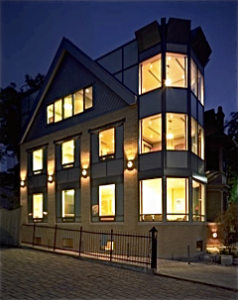 89 Years of Continued Care
89 Years of Continued Care
The Bochner Eye Institute was founded in 1929 by Dr Maxwell Bochner, a caring, compassionate, and highly respected ophthalmologist. Dr Harold Stein joined Dr Bochner in 1958, and Dr Albert Cheskes in 1966. Dr Raymond Stein became active staff in 1988 and Dr Fatimah Gilani become part of the team in 2017. Dr Rebecca Stein is a senior ophthalmology resident at Univeristy of Toronto and will be the 4th generation ophthalmologist at Bochner. This will be a first in North America with four generations of ophthalmologists.
Link to Bochner History
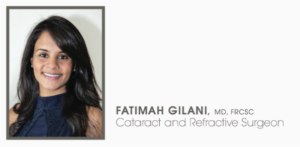 Ontario Optometric Association (OOA) in Toronto, June 2018
Ontario Optometric Association (OOA) in Toronto, June 2018
The Bochner Eye Institute was founded in 1929 by Dr Maxwell Bochner, a caring, compassionate, and highly respected ophthalmologist. Dr Harold Stein joined Dr Bochner in 1958, and Dr Albert Cheskes in 1966. Dr Raymond Stein became active staff in 1988 and Dr Fatimah Gilani become part of the team in 2017. Dr Rebecca Stein is a senior ophthalmology resident at Univeristy of Toronto and will be the 4th generation ophthalmologist at Bochner. This will be a first in North America with four generations of ophthalmologists.
Bio of Dr Fatimah Gilani
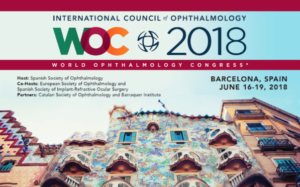 World Ophthalmology Congress (WOC) in Barcelona, June 2018
World Ophthalmology Congress (WOC) in Barcelona, June 2018
Dr Raymond Stein was an invited speaker to the WOC to discuss his techniques and outcomes with Topography-guided PRK and crosslinking. The technique allows for improving best-corrected acuity over corneal crosslinking alone, so patients may wear glasses or soft contact lenses. The goal is to reduce irregular astigmatism and prevent progressive ectasia.
Article on TG-PRK by Dr Stein
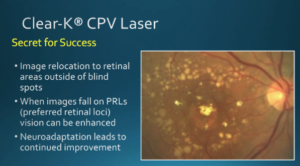 Canadian Ophthalmology Society (COS) in Toronto, June 2018
Canadian Ophthalmology Society (COS) in Toronto, June 2018
Dr Raymond Stein was a guest speaker at the COS meeting in Toronto on June 2, 2018 to discuss the new technique and outcomes of Clear-K® CPV laser for dry age-related macular degeneration (AMD). This technology is now approved by Health Canada. Bochner becomes the first centre in North America to offer this innovative technology. We are currently accepting referrals for patients with dry AMD with best-corrected acuity between 20/60 and 20/800.
Info on Clear-K®CPV for AMD
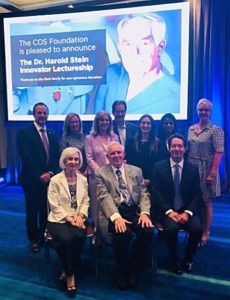 Dr Harold Stein Innovators Lecture June 2018
Dr Harold Stein Innovators Lecture June 2018
The Canadian Ophthalmological Society (COS) established the Dr Harold Stein Innovators Lecture as an annual lecture. This year the lecture was delivered by Dr Soosan Jacob of India who discussed her ophthalmic surgical techniques that have resulted in improved patient outcomes.This is the first named lecture at the COS main meeting and was attended by Dr Harold Stein and family.
Innovators Lecture, Canadian Ophthalmological Society
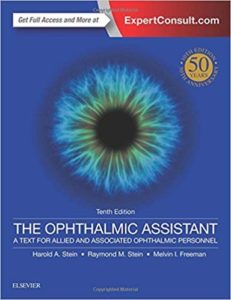 Best Selling Textbook in Ophthalmology
Best Selling Textbook in Ophthalmology
The 10th Edition of the Ophthalmic Assistant, written by Drs Harold Stein, Raymond Stein, and Melvin Freeman, has been recognized by Amazon as the “Best Selling Book in Ophthalmology”. We are very proud that our textbook is being used around the world to train doctors, technicians, and staff in the field of ophthalmology.
Amazon Best Selling Book
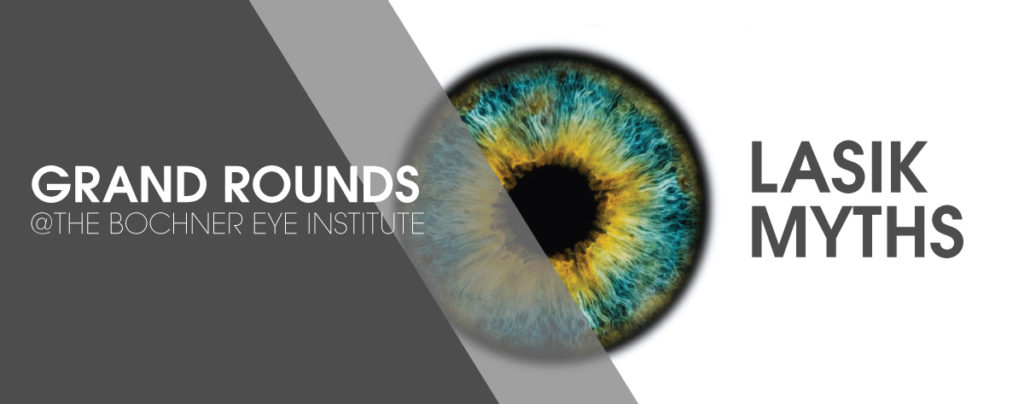

 After making the decision to have laser vision correction, the most important choice you will make is the surgeon you select to perform your procedure. The search for the right surgeon can be overwhelming if you don’t know what you’re looking for. To help guide you in the right direction, leading LASIK surgeon Raymond Stein of Bochner Eye Institute shares his thoughts on choosing a LASIK provider.
After making the decision to have laser vision correction, the most important choice you will make is the surgeon you select to perform your procedure. The search for the right surgeon can be overwhelming if you don’t know what you’re looking for. To help guide you in the right direction, leading LASIK surgeon Raymond Stein of Bochner Eye Institute shares his thoughts on choosing a LASIK provider.  A common question that Dr. Raymond Stein of
A common question that Dr. Raymond Stein of  Do you struggle with the challenges of a refractive error and the restrictions of glasses or contact lenses, yet find yourself on the fence about having
Do you struggle with the challenges of a refractive error and the restrictions of glasses or contact lenses, yet find yourself on the fence about having 

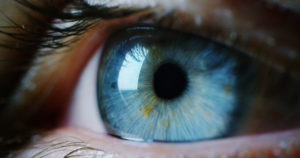
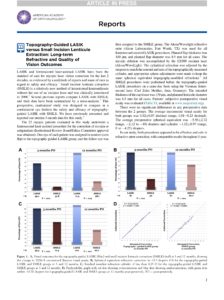
 89 Years of Continued Care
89 Years of Continued Care Ontario Optometric Association (OOA) in Toronto, June 2018
Ontario Optometric Association (OOA) in Toronto, June 2018 World Ophthalmology Congress (WOC) in Barcelona, June 2018
World Ophthalmology Congress (WOC) in Barcelona, June 2018 Canadian Ophthalmology Society (COS) in Toronto, June 2018
Canadian Ophthalmology Society (COS) in Toronto, June 2018 Dr Harold Stein Innovators Lecture June 2018
Dr Harold Stein Innovators Lecture June 2018 Best Selling Textbook in Ophthalmology
Best Selling Textbook in Ophthalmology